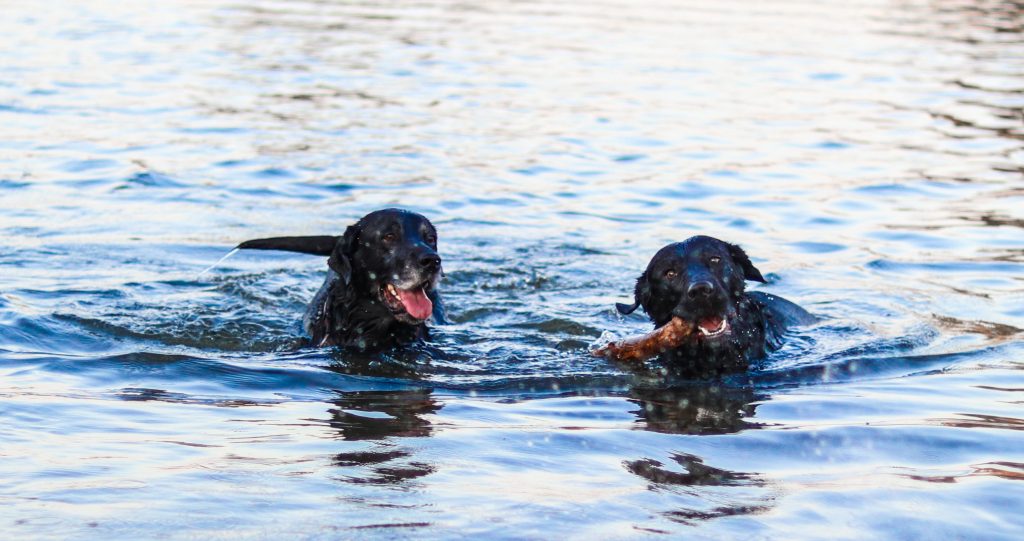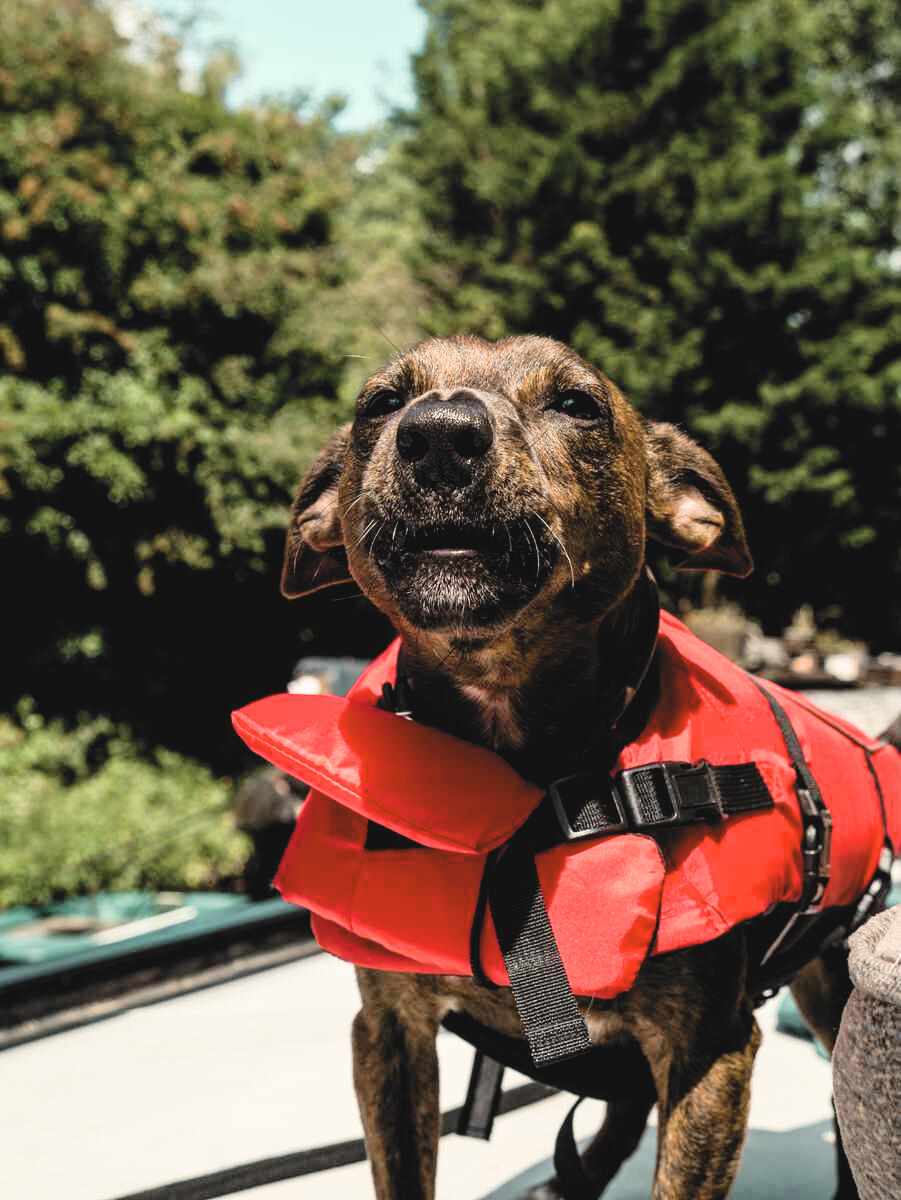
Estimated reading time: 1 minute
Teaching dogs to swim: why it’s important for all pet parents
Whether you have a pool, live near a beach, or plan to visit a lake this summer, teaching dogs to swim is an essential safety tool if you want your best mate to cool off in the water with you.
Swimming is not only a fantastic way to beat the heat, but also a great form of exercise for dogs.
And let’s not forget it’s also a lot of fun!
However, contrary to popular belief, not all dogs are natural swimmers.
Just like humans, some need a little encouragement to take the plunge and some guidance in ensuring they know how to swim, and exit the pool, safely.
That’s why we’re sharing some simple – yet essential – tips for teaching dogs to swim safely.

Benefits of swimming for dogs
Swimming is an excellent way for dogs to exercise.
It’s a low-impact activity that helps build muscle and improve cardiovascular health.
Plus, the buoyancy of water supports their body and reduces stress on their joints, making it ideal for older dogs with joint issues or those who suffer from arthritis and related diseases.
And, with the days only set to get warmer, swimming is a fantastic way to help your dog stay cool and comfortable on those sweltering summer days.
But the benefits of swimming extend beyond physical health; for many dogs, swimming is a mentally stimulating experience.
Finally, watching your dog splash and paddle around, or chase after a ball or stick is such a fun experience for pet parents too.
Safety first: importance of swimming lessons for dogs
However, safety is paramount when introducing your dog to water.
Surprisingly, not all dogs take to water instinctively.
And even breeds known for their swimming abilities can sometimes be hesitant.
So, teaching your dog to swim in a safe and controlled environment is crucial.
Owners must know how to build their dog’s confidence in the water, and ensure they know how to get in and out safely.
But while it can be enticing to just want to jump straight into the water with your dog, it’s extremely important that pet parents introduce them to water in a patient and controlled way, with safety being the number one focus.

How do dogs learn to swim?
They learn with a great teacher! So, here’s our top 10 tips for all pet parents when doing at-home swimming lessons for dogs.
- Start slowly and safely
The first step in teaching your dog to swim is to introduce them to water in a calm environment. Start with shallow water where your dog can feel the ground under their feet. It could be a kiddie pool or a shallow part of a calm lake. Let your dog explore the water at their own pace. Encourage them with a cheerful voice and maybe some water-safe toys. It’s crucial not to force your dog into the water as this can cause fear and aversion.
- Use a dog life jacket
For safety and added buoyancy, consider using a dog life jacket. This can be especially important for breeds that are not natural swimmers or for dogs that are apprehensive about water. A life jacket can give your dog confidence and are vital for deeper water or open areas like lakes or the sea.

- Build their confidence
Gradually encourage your dog to go deeper into the water. You can do this by slowly walking into the water yourself and calling your dog to you. Make sure to always praise and reward them for their bravery. Treats can be a great motivator, but ensure they are given safely.
- Teach swimming movements
Once comfortable in water, teach them swimming techniques by supporting their belly in deeper water. This will encourage them to use their legs to paddle. Most dogs will instinctively start dog paddling, but some may need a little time to get the hang of it. Keep these sessions short and positive.
- Never leave dog unsupervised in pool
Whether your dog is a seasoned swimmer or just learning, never leave them unattended. Always supervise to prevent accidents, such as getting caught in undercurrents in rivers or waves at the beach.
- Rinse off after swimming
After swimming, rinse your dog off with fresh water. Pool chemicals, salt from the sea, or bacteria from lakes can irritate a dog’s skin and coat.
- Ensure they know how to exit pool
This is a very very important step, and should probably be one of, if not the, first lesson taught. Always show dogs how they can easily exit the pool via steps or invest in a safety ramp also when first starting out.
- Avoid over-exertion
It’s important to remember that not all dogs are built for long periods of swimming. Dogs, especially those that are not used to swimming, can tire quickly. Those with short muzzles, such as bulldogs or pugs, can have a harder time breathing, especially when exerting themselves. Watch for signs of fatigue and encourage your dog to take breaks. If they seem tired, call it a day.
- Be prepared for an emergency
Know basic pet first aid and be aware of the nearest veterinary clinic. It’s always better to be prepared for any situation that might arise.
- Know and respect dog’s limits
Finally, it’s important to understand and respect your dog’s limits. Some dogs may never enjoy swimming, and that’s okay. There are plenty of other ways to have fun and exercise with your dog.
Now you can enjoy those warm summer days together
By following these guidelines, you can help ensure that swimming is a safe and enjoyable activity for your dog.
Which means there will be a lot of fun days ahead this summer!

